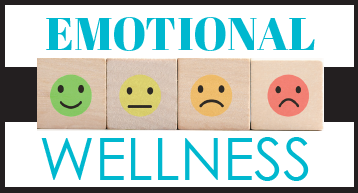Rabbi David Sutton & Dr. David Katzenstein, LCSW-R
The Inner Child
The Gaon of Vilna (Mishlei 16:7) teaches that the term tinok,child (mentioned in Sotah 47a) refers to the middot and paths that we’ve always followed, as well as the animal instinct that we’ve always gone after, behavior to which we’ve grown accustomed. This behavior is called a tinok because it’s been with us from when we were infants.
We all have a child inside of us, and we have to talk to that inner child, just like we talk to our actual children. If our four-year-old wants to eat sour belts before he eats his supper, we have to talk to him and explain to him on his level why he must first eat healthy foods, until he understands. True, at times we have to be strict, but, in talking with our inner child, as well as with our actual children, the strictness must be carried out with the left hand, the less dominant hand. The pushing away has to be weaker than the bringing close. We have to work with our inner child until he agrees and understands why something is better for him.
Giving the Right Messages
We do need to be cautious in regard to ingraining these values within our children. Often as parents we engage in what is termed “double-bind messaging,” a type of communication that creates conflicting and incompatible messages for the child, leading to confusion and psychological distress. He has no idea what is expected of him.
When a child comes home with an unsatisfactory grade, we might say, “Don’t worry about the mark you got on the test, as long as you put in the effort.” But while we say these words, our affect and expression send a message of disappointment.
Or a parent may tell a child, “Be independent, but don’t make decisions without my approval.” So is he supposed to be independent, or does he go to his parent with every decision? This creates a double-bind situation. It’s a Catch 22. The child is left feeling confused, unsure of what is expected of him. He may feel like he can never satisfy his parents’ expectations.
Overall, double-bind messages can have a negative impact on a child’s development and well-being. They can lead to feelings of anxiety, low self-esteem, and decreased confidence. Over time, the repeated experience of double-bind messages can lead to internalized conflicts and a sense of being trapped.
By providing clear, consistent, and supportive messages, parents can help their children to feel confident, secure, and well-adjusted.
We can’t wake up one morning and decide: From now on, I will speak only words of Torah or prayer throughout the day. No more inconsequential discussions! Of course, such a resolution will backfire. We must work with our inner child and take on honest, realistic commitments.
The Four Sons
At the Pesach seder, we read from the Haggadah, “The Torah speaks about four sons,” four children whom we are to tell about the Exodus from Egypt. If the Haggadah is recited by a person who is on his own, and he is not recounting the story of Yetziyat Mitzrayim to anyone else, why does he, too, have to read about the four sons?
Because we each have all four children inside of us: a hacham, a wise side; a rasha,a wicked side; a tam,simple side; and a she’eino yode’a lishol,a side of us that doesn’t even know how to ask.
Each one must be spoken to on his level, not only at the seder, but within ourselves, as well.
TAKEAWAY:
All of these children are inside each of us, and we have to learn how to work with, not ignore, our inner child.
For example, rather than clamping down on our insatiable desire to eat by fasting, it is best to eat a full meal, but to convince our inner child to leave over one or two bites. This is called taanit haRaavad, and it teaches us to curb our desires – without causing the inner childto fight back.



